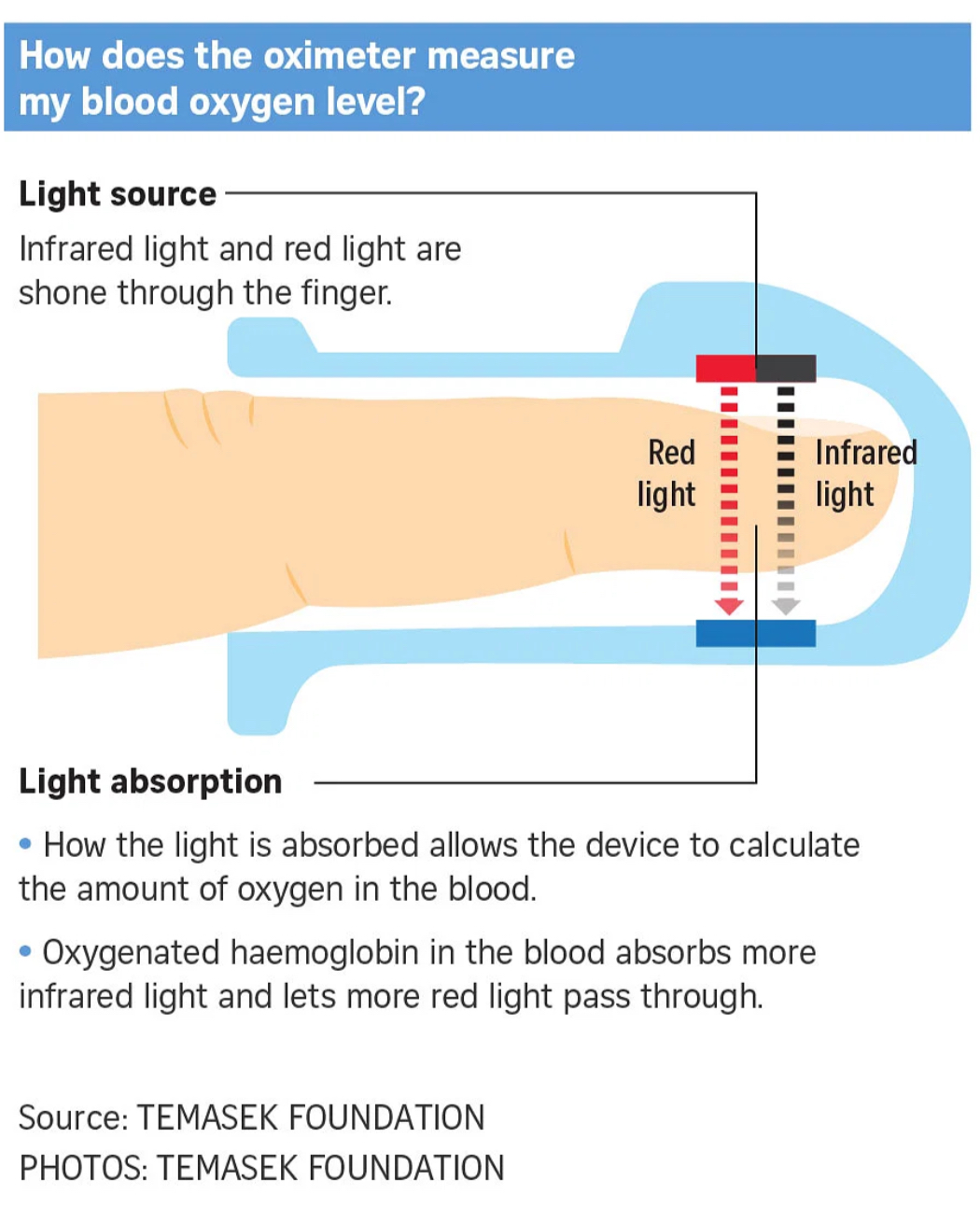unit 8 - monitor peripheral oxygen saturation
1/10
There's no tags or description
Looks like no tags are added yet.
Name | Mastery | Learn | Test | Matching | Spaced |
|---|
No study sessions yet.
11 Terms
Explain the term ‘oxygen saturation’
Oxygen saturation is a measure of how much hemoglobin is currently bound to oxygen compared to how much hemoglobin remains unbound
Purpose of monitoring peripheral oxygen saturation
Oxygen is essential for cells to function
Monitoring oxygen saturation can assist by assessing organ function and the need for oxygen therapy
Range of healthy for Spo2
95-100%
Range of low Spo2
90-94%
Range of dangerously low Spo2
Below 90%
How does oximeter measure blood oxygen level

What is cyanosis
Blueish discoloration of the skin or mucous membranes
What is dyspnoea
Shortness of breath. Is often described as an intense tightening in the chest , air hunger, difficulty breathing, breathlessness or a feeling of suffocation
What is hypoxia
Oxygen not available at the tissue level to maintain adequate homeostasis
4 factors affecting monitoring of peripheral oxygen saturation
Skin condition
(Pigmentation, thickness, temperature)
Placement of oximeter
Poor circulation
Use of finger nails polish
Consideration for client on continuous monitoring of oxygen saturation
It is also essential to monitor the location of the probe for changes in the skain condition, such as blisters or damaged to the nail bed
Elderly patients with fragile skin & patients with burns require the probe to be repositioned every two - four hours